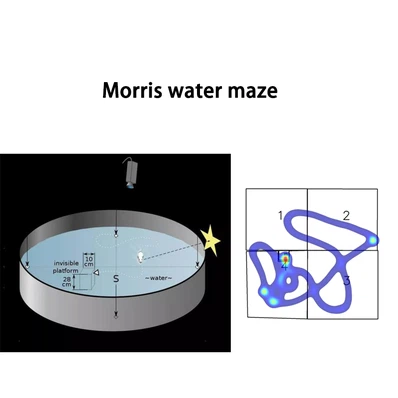- Empty cart.
- Continue Shopping
GBR-MR
Priclinical research, multiple cognitive and motor functions, easy to construct
PRODUCT PARAMETER
1. Area dwell time,
2. Activity distance,
3. Number of entries, latency,
4. Average speed,
5. Trajectory map,
6. Heat map,
7. Working memory error,
8. Reference memory error, etc
PRODUCT DESCRIPTION
The eight-arm maze, also known as the radial arm maze, is a behavioral test commonly used in preclinical research to study spatial learning and memory in rodents.
The maze consists of a central platform with eight arms radiating outwards. Each arm has a food reward at the end, and the goal is for the rodent to learn which arms contain the reward and to navigate the maze efficiently.
The maze can be used to investigate the effects of different factors on spatial learning and memory, such as pharmacological agents or genetic manipulations.
Overall, the eight-arm maze provides a useful tool for researchers to study rodent cognition and aid in the development of treatments for cognitive disorders.
PRODUCT FEATURES
The Radial arm maze offers several advantages for preclinical research.
Firstly, it allows for the assessment of multiple cognitive and motor functions, including spatial memory, reference memory, and exploration, all within the same apparatus. This can save time and reduce the number of animals required for experiments.
Additionally, the maze is relatively inexpensive and easy to construct, making it accessible for researchers with limited resources. The octagonal shape also allows for the introduction of visual cues and barriers to further investigate the effects of manipulations on cognitive function.
Finally, the octagonal maze has been shown to provide reliable and consistent results, making it a valuable tool for investigating cognitive function.
PRODUCT APPLICATION
The radial arm maze, also known as the eight-arm maze, is another widely used apparatus in preclinical research, particularly in the study of spatial learning and memory in rodents. It can be adapted to assess various cognitive and motor functions, including working memory, reference memory, and exploration.
Additionally, the maze can be used to investigate the effects of different pharmacological agents and environmental manipulations on cognitive function. Overall, the octagonal maze provides a useful tool for researchers to investigate the neural mechanisms underlying cognitive function and memory processes, and can be applied in various fields, including neuroscience, psychology, and pharmacology.

























